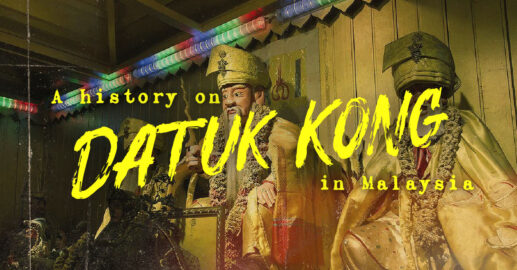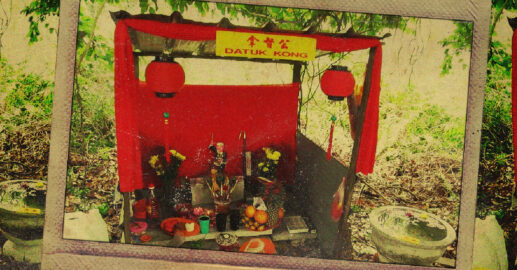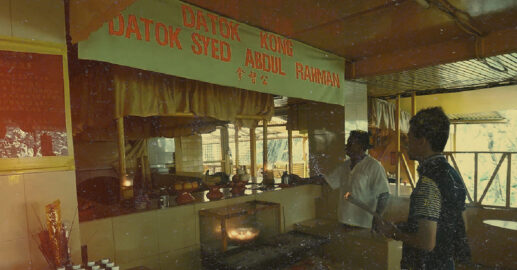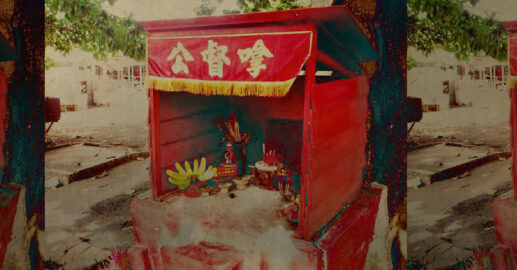Datuk Kong - The statue in the Chinese-like Shrines are actually Malay?! Here's what they are!
Ever walked past the shop lots or inside the shopping mall car parks and noticed the shrines nearby that the Chinese and Taoist pray for good fortune and wealth? You may think of it as a Chinese god or deity that is being worshiped, but did you know that some of these deity statues are actually Malay? Wait, people are actually praying to a Malay statue? Putting religious sensitivity aside, this is the unique culture of Malaysia. These shrines are commonly called “Datuk Kong” and in this article, we’ll dive into their history and how cultures worship them.

A History Of “Datuk Kong”
So when did the act of worshiping and praying to the Datuk Kong shrine start? It was believed that the worshiping of the “Datuk Kong” started around the 15th to 19th century, around the time when an influx of Chinese migrants started coming into Malaysia. The Chinese would bring in the spirit known as “di zhu gong” or god of the land for protection on a foreign land. At the time, the act of worshiping animate objects or “animisme” was profound, and so it was easy for the Chinese & Malay to assimilate and combine one another’s culture. It was also said that when the Chinese tried to explain this concept to the local Malays, they would pronounce it as “tok kong” which was then interpreted as “Datuk Kong”.

The Shrines Aren’t Always Deities or Gods..
One would think that the shrine statues would be gods or deities, but this isn’t always the case. A person who went above and beyond to help their community or village would also be worshiped as a Datuk Kong! Datuk / Dato is known as an honorary term bestowed upon a person who contributed overwhelmingly. Similarly, “Gong” is an honorary term for the Chinese to their gods. If a man’s martial prowess is so amazing and powerful, then it wouldn’t be surprising that some people would worship him as a deity even after his death. It was likely some Na Tuk Kong might have been local people as some of these effigies have tengkoloks, sampins, kopiahs and other traditional Malay wear.

Wait, some shrines don’t accept non-halal offerings?
As some of these shrines consist of Malay figures, many believe that these Malay shrines should and can only be served with halal food as Islam doesn’t allow for drinking alcohol or eating pork. The practice will change according to the area but the general consensus is that one should be “cautious” in thinking of what to offer at Na Tuk Kong’s menu. Offerings such as curry, kopi-O, nasi lemak, cigarettes and such could be used as an offering. On the other hand, non-Malay Na Tuk Kongs are fine with non - halal offerings such as pork and alcohol.

Why worship the shrines?
You’ll see people praying when they want to wish for good luck and fortune to be bestowed onto them. Property developers who are starting a construction of a new building may also build a shrine nearby or pray at one prior to the actual construction as they believed that their prayers would ensure that the construction goes smoothly without any bumps. If they don’t believe in their prayers or don’t perform them, the construction will likely go wrong or face difficulties, but of course this could very well just be coincidence.. Most shopping malls and the mall parking lots would also have shrines so that business owners can pray that their shops do well in sales and have smooth daily operations.
So, all in all, that is a short history of what the Datuk Kong shrine is. This blend of different religions can only be done in a country that is the melting pot of cultures as Malaysia. Speaking of worshiping, over at Hauntu, the mysterious Bintang 7 cult is also doing it’s own worshiping to appease their own spirit. But what is this spirit and what is Bintang 7? Book a slot with us now and find out by yourselves today.
Useful Links
Learn More
Social
©Copyright 2026 Superdough Sdn Bhd (201401003805) | All Rights Reserved